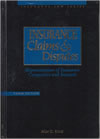11/25/2020· Construction
Construction Contract Notice Letters
Most construction contracts require written notice for changes, differing site conditions, extra work, or other events which may affect the contractor’s time and cost of performance. The process of giving “notice” is vital to triggering the contract mechanisms that allow the contractor to pursue additional time and cost and to reserve its rights to recover for any unforeseen...














